Sun Joe SWJ806E Handleiding
Sun Joe
Zaagmachine
SWJ806E
Bekijk gratis de handleiding van Sun Joe SWJ806E (68 pagina’s), behorend tot de categorie Zaagmachine. Deze gids werd als nuttig beoordeeld door 55 mensen en kreeg gemiddeld 4.9 sterren uit 28 reviews. Heb je een vraag over Sun Joe SWJ806E of wil je andere gebruikers van dit product iets vragen? Stel een vraag
Pagina 1/68

© 2020 by Snow Joe
®, LLC
All rights reserved. Original instructions. SAVE THESE INSTRUCTIONS
1
EN
A Division of Snow Joe
®, LLC
R
OPERATOR’S MANUAL
Model SWJ806E Form No. SJ-SWJ806E-880E-MR7
ELECTRIC POLE + CHAIN SAW
8-INCH | 8-AMP
IMPORTANT!
Safety Instructions
All Operators Must Read These
Instructions Before Use
Read all safety warnings and all instructions. Failure to follow
the warnings and instructions may result in electric shock, re
and/or serious injury. Save all warnings and instructions for
future reference.
mDANGER! This indicates a hazardous situation, which,
if not followed, will result in serious injury or death.
mWARNING! This indicates a hazardous situation, which,
if not avoided, could result in serious injury or death.
mCAUTION! This indicates a hazardous situation, which,
if not avoided, could result in minor or moderate injury.
General Power Tool Safety
Warnings
mWARNING! When using electric yard tools, basic safety
precautions should always be followed to reduce the risk of
re, electric shock, and personal injury, including the following:
Work Area Safety
1. Keep work area clean and well lit – Cluttered or dark
areas invite accidents.
2. Do not operate power tools in explosive atmospheres,
such as in the presence of ammable liquids, gases
or dust – Power tools create sparks which may ignite the
dust or fumes.
3. Keep children and bystanders away while operating a
power tool – Distractions can cause you to lose control.
Electric Safety
1. Power tool plugs must match the outlet. Never modify
the plug in any way. Do not use any adapter plugs with
earthed (grounded) power tools. Unmodied plugs and
matching outlets will reduce risk of electric shock.
2. Avoid body contact with earthed or grounded
surfaces, such as pipes, radiators, ranges and
refrigerators – There is an increased risk of electric shock
if your body is earthed or grounded.
3. Do not expose power tools to rain or wet conditions
– Water entering a power tool will increase the risk of
electric shock.
4. Do not abuse the cord. Never use the cord for
carrying, pulling or unplugging the power tool. Keep
cord away from heat, oil, sharp edges or moving parts.
Damaged or entangled cords increase the risk of electric
shock.
5. When operating a power tool outdoors, use an
extension cord suitable for outdoor use. Use of a cord
suitable for outdoor use reduces the risk of electric shock.
6. If operating a power tool in a damp location is
unavoidable, use a residual current device (RCD)
protected supply. Use of an RCD reduces the risk of
electric shock.
Personal Safety
1. Stay alert, watch what you are doing and use common
sense when operating a power tool. Do not use a
power tool while you are tired or under the inuence
of drugs, alcohol or medication – A moment of
inattention while operating power tools may result in
serious personal injury.
2. Use personal protective equipment. Always wear
eye protection – Protective equipment such as dust
mask, non-skid safety shoes, hard hat, or hearing
protection used for appropriate conditions will
reduce personal injuries.
3. Prevent unintentional starting. Ensure the switch is
in the o-position before connecting battery packs,
picking up or carrying the tool – Carrying power tools
with your nger on the switch or energising power tools
that have the switch on invites accidents.
4. Remove any adjusting key or wrench before
turning the power tool on – A wrench or a key left
attached to a rotating part of the power tool may result
in personal injury.
5. Do not overreach. Keep proper footing and balance at
all times – This enables better control of the power tool in
unexpected situations.
6. Dress properly. Do not wear loose clothing or
jewellery. Keep your hair, clothing and gloves away
from moving parts – Loose clothes, jewellery or long hair
can be caught in moving parts.
7. If devices are provided for the connection of dust
extraction and collection facilities, ensure these are
connected and properly used – Use of dust collection
can reduce dust-related hazards.

2
Power Tool Use and Care
1. Do not force the power tool. Use the correct power
tool for your application – The correct power tool will
do the job better and safer at the rate for which it was
designed.
2. Do not use the power tool if the switch does not turn
it on and o – Any power tool that cannot be controlled
with the switch is dangerous and must be repaired.
3. Disconnect the battery packs from the power
tool before making any adjustments, changing
accessories, or storing power tools – Such
preventive safety measures reduce the risk of starting
the power tool accidentally.
4. Store idle power tools out of the reach of children and
do not allow persons unfamiliar with the power tool or
these instructions to operate the power tool – Power
tools are dangerous in the hands of untrained users.
5. Maintain power tools. Check for misalignment or
binding of moving parts, breakage of parts and any
other condition that may aect the power tool’s
operation. If damaged, have the power tool repaired
before use – Many accidents are caused by poorly
maintained power tools.
6. Keep cutting tools sharp and clean – Properly
maintained cutting tools with sharp cutting edges are less
likely to bind and are easier to control.
7. Use the power tool, accessories etc. in accordance
with these instructions, taking into account the
working conditions and the work to be performed –
Use of the power tool for operations dierent from those
intended could result in a hazardous situation.
Service
Have your power tool serviced by a qualied repair person
using only identical replacement parts. This will ensure that
the safety of the power tool is maintained.
Chain Saw Safety Warnings
• Keep all parts of the body away from the saw chain
when the chain saw is operating. Before you start the
chain saw, make sure the saw chain is not contacting
anything. A moment of inattention while operating the
chain saw may cause entanglement of your clothing or
body with the saw chain.
• Always hold the chain saw with your right hand on
the rear handle and your left hand on the front handle.
Holding the chain saw with a reversed hand conguration
increases the risk of personal injury and should never be
done.
• Hold the power tool by insulated gripping surfaces
only, because the saw chain may contact hidden
wiring. Saw chains contacting a "live" wire may make
exposed metal part of the power tool "live" and give the
operator a electric shock.
• Wear safety glasses and hearing protection. Further
protective equipment for head, hands, legs and feet is
recommended. Adequate protective clothing will reduce
personal injury by ying debris or accidental contact with
the saw chain.
• Do not operate the chain saw in a tree. Operation of a
chain saw while up in a tree may result in personal injury.
• Always keep proper footing and operate the chain
saw only when standing on a xed, secured and level
surface. Slippery or unstable surfaces such as ladders
may cause a loss of balance or control of the chain saw.
• When cutting a limb that is under tension, be cautious
of spring back. When the tension in the wood bers is
released, the spring-loaded limb may strike the operator
and/or throw the chain saw out of control.
• Use extreme caution when cutting brush and saplings.
The slender material may catch the saw chain and be
whipped toward you or pull you o balance.
• Carry the chain saw by the front handle with the
chain saw switched o and away from your body.
When transporting or storing the chain saw, always
t the guide bar cover. Proper handling of the chain saw
will reduce the likelihood of accidental contact with the
moving saw chain.
• Follow instructions for lubricating, chain tensioning
and changing accessories. An improperly tensioned or
poorly lubricated chain may either break or increase the
chance for kickback.
• Keep handles dry, clean and free from oil and grease.
Greasy, oily handles are slippery and can cause loss
of control.
• Cut wood only. Do not use the chain saw for any other
purpose. For example, do not use the chain saw to cut
plastic, masonry or non-wood building materials. Use
of the chain saw for operations dierent than intended
could result in a hazardous situation.
Causes and operator prevention of
kickback
Kickback may occur when the nose or tip of the guide bar
touches an object, or when the wood closes in and pinches
the saw chain in the cut.
Tip contact in some cases may cause a sudden reverse
reaction, kicking the guide bar up and back towards the
operator.
Pinching the saw chain along the top of the guide bar may
push the guide bar rapidly back towards the operator.
Either of these reactions may cause you to lose control of the
saw which could result in serious personal injury. Do not rely
exclusively upon the safety devices built into your saw. As a
chain saw user, you should take several steps to keep your
cutting jobs free from accident or injury.
Kickback is the result of tool misuse and/or incorrect operating
procedures or conditions and can be avoided by taking proper
precautions as given below:

3
• Maintain a rm grip (right hand on the rear handle and
left hand on the front handle with thumbs and ngers
encircling the respective handles) and position your
body and arms to allow you to resist kickback forces.
Kickback forces can be controlled by the operator if
proper precautions are taken. Do not let go of the
chain saw.
• Do not overreach and do not cut above shoulder
height. This helps prevent unintended tip contact and
enables better control of the unit in unexpected situations.
• Only use replacement bars and chains specied by the
manufacturer. Incorrect replacement of bars and chains
may cause chain breakage and/or kickback.
• Follow the manufacturer’s sharpening and
maintenance instructions for the saw chain. Decreasing
the depth gauge height can lead to increased kickback.
Specic Safety Rules
mWARNING! To protect yourself SHOCK HAZARD! –
from electrocution, do not operate the electric pole + chain
saw within 50 ft of overhead wires. Failure to follow this
instruction could result in severe personal injury.
Operating Tips for Pole Chain Saws
• Note the extension cord's location relative to the tool.
While operating the pole chain saw, be careful not to trip
over the cord.
• Keep the cord away from the chain and the operator at
all times.
• Keep children, animals, and bystanders a safe distance
away from the pole chain saw and extension cord.
• Only the pole chain saw operator should be in the
work area.
• Do not use the pole chain saw to cut down trees.
• Always use two hands when operating the pole chain saw.
Grip the pole chain saw securely with one hand on the
trigger and the other hand on the pole.
• Before starting the pole chain saw, make sure that the saw
chain is not in contact with any object.
• Do not allow the pole chain saw to make contact with
grounded objects such as pipes, fences, and metal posts.
• Do not force the pole chain saw while cutting. Apply light
pressure. It will perform more eectively and safely if it is
used at the rate for which it was designed.
• Use extreme caution when cutting a limb that is under
tension. When wood tension is released, the limb could
spring back and strike the operator, causing severe injury
or death.
• Do not carry a plugged-in unit. Carry the pole chain saw
from one place to another with the unit unplugged. During
transport, hold the pole at its balance point (close to the
saw end), with the guide bar and chain facing to the rear.
When transporting or storing the pole chain saw, always t
the guide bar cover.
• Do not cut small brush and saplings with the pole chain
saw. Small branches may catch in the chain and be
whipped towards the operator, which could pull the
operator o balance.
Electrical Safety
1. Ground fault circuit interrupter (GFCI) protection should
be provided on the circuit(s) or outlet(s) to be used for
the electric pole + chain saw. Receptacles are available
having built-in GFCI protection and may be used for this
measure of safety.
2. To prevent electric shock, use only with an extension cord
suitable for outdoor use, such as SW-A, SOW-A, STW-A,
STOW-A, SJW-A, SJOW-A, SJTW-A, or SJTOW-A.
Before use, check that the extension cord is in good
condition. When using an extension cord, make sure to
use one heavy enough to carry the current your product
will draw. An undersized cord will cause a drop in line
voltage resulting in loss of power and overheating.
3. To reduce the risk of electric shock, this appliance has
a polarized plug (i.e. one blade is wider than the other).
Use this appliance only with a polarized UL-, CSA-, or
ETL-rated extension cord for outdoor, all-weather use.
The appliance plug will t into a polarized extension
cord only one way.
If the appliance plug does not t fully into the extension
cord, reverse the plug. If the plug still does not t, obtain
a correct polarized extension cord. A polarized extension
cord will require the use of a polarized wall outlet. The
extension cord plug will t into the polarized wall outlet
only one way. If the plug does not t fully into the wall
outlet, reverse the plug. If the plug still does not t,
contact a qualied electrician to install the proper wall
outlet. Do not modify the appliance plug, extension cord
receptacle, or extension cord plug in any way.
m WARNING! m
Electric shock may cause SEVERE INJURY or
DEATH. Heed these warnings:
• Do not allow any part of the electric pole + chain saw
to make contact with water while it is in operation. If
the appliance becomes wet while turned o, wipe dry
before starting.
• Use only a UL-, CSA-, or ETL-rated extension cord
for outdoor, all-weather use.
• Do not use an extension cord over 100 ft (30 m).
• Do not touch the appliance or its plug with wet hands
or while standing in water. Wearing rubber boots
oers some protection.
EXTENSION CORD CHART
Cord Length:
Min. Wire Gauge (A.W.G.):
Up to 50 ft
(15 m)
16
+50 ft - 100 ft
(+15 m - 30 m)
14
Product specificaties
| Merk: | Sun Joe |
| Categorie: | Zaagmachine |
| Model: | SWJ806E |
Heb je hulp nodig?
Als je hulp nodig hebt met Sun Joe SWJ806E stel dan hieronder een vraag en andere gebruikers zullen je antwoorden
Handleiding Zaagmachine Sun Joe
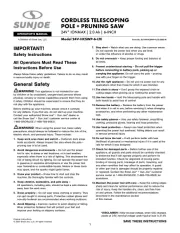
29 Juli 2025

6 Januari 2025

15 November 2024

15 November 2024

26 Juli 2023

2 Juli 2023

20 Juni 2023

17 Juni 2023

4 Juni 2023

10 Mei 2023
Handleiding Zaagmachine
- Snow Joe
- Sthor
- Brennenstuhl
- Oregon Scientific
- Triton
- Gamma
- Smart365
- Vonroc
- MTM
- Hobart
- Hazet
- Germania
- Topex
- Meister Craft
- Toledo
Nieuwste handleidingen voor Zaagmachine
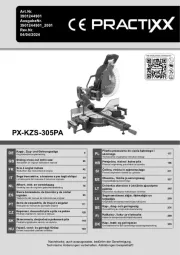
30 Juli 2025
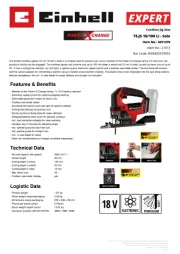
29 Juli 2025
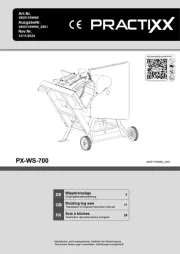
29 Juli 2025
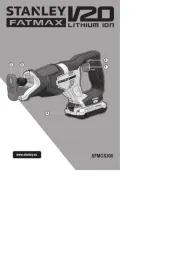
29 Juli 2025
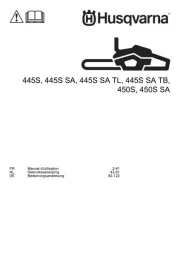
28 Juli 2025
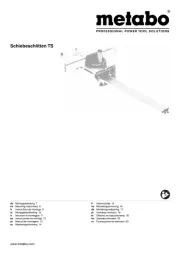
23 Juli 2025
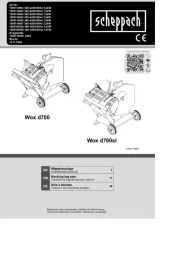
21 Juli 2025
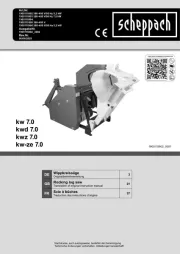
21 Juli 2025
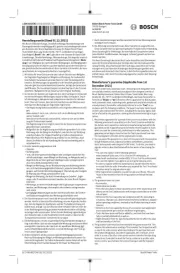
20 Juli 2025
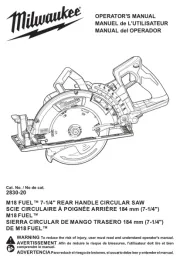
16 Juli 2025